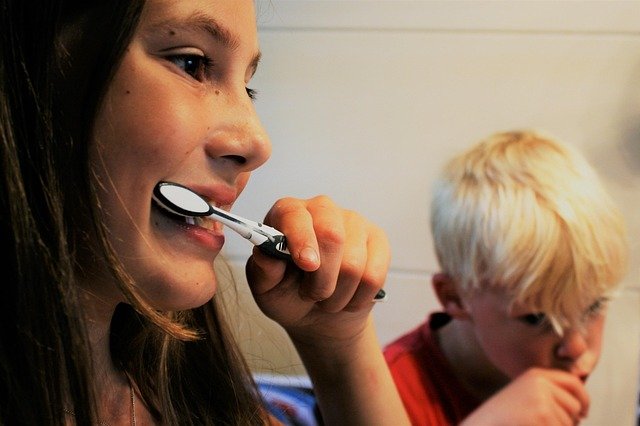Choosing Cleaning Agents Based on Surface Type and Finish
Selecting the right cleaning agent for tiled surfaces depends on surface material and finish, grout condition, and the environment (bathroom or kitchen). This article outlines how to match cleaners — from gentle eco options and steam to targeted chemical treatments — with tile, joints, and sealers to limit damage and support routine maintenance.

Choosing the appropriate cleaning agent requires balancing effectiveness, safety, and long-term care for tile surfaces and their grout joints. Different finishes — glazed ceramic, unglazed porcelain, natural stone, or textured tiles — respond differently to acids, alkalis, and abrasive tools. Proper selection minimizes mortar damage, prevents sealer breakdown, and reduces the risk of persistent stains, mildew, or mold. This article explains how to pair agents and methods with surface type and finish, how to approach restoration versus maintenance, and when to consider eco or professional options.
Which agents suit different tile finishes?
Glazed ceramic and porcelain tolerate a wider range of cleaners because the finish is dense and less porous; pH-neutral detergents and mild alkaline cleaners usually work well. Unglazed or textured tiles and natural stone (like travertine, marble, or slate) are porous and often damaged by acids or strong alkalis. For those, use stone-specific cleaners or very dilute pH-neutral products. Avoid acidic cleaners on calcareous stones to prevent etching. Always test a small inconspicuous area and rinse thoroughly to protect sealers and finishes.
How should you treat joints, mortar, and grout stains?
Grout and mortar are porous and collect dirt, stains, and residues that ordinary detergents can’t fully remove. For surface stains, a soft brush with a mild cleaner can lift soils from joints without abrading adjacent tile. For deeper or set-in stains, oxygenated bleach (peroxide-based) can be safer than chlorine in many cases because it whitens without strong odors or corrosive effects. Acidic grout cleaners may remove mineral deposits but can erode cementitious mortar — use sparingly and neutralize afterward. For colored or sealed grout, choose a product compatible with the sealer.
What to use for mildew, mold, and sanitation needs?
Bathrooms and some kitchen areas are prone to mildew and mold due to moisture. For sanitation, cleaners with EPA-registered disinfectants or hydrogen peroxide formulas can reduce microbial load; bleach solutions can be effective but may discolor or weaken grout over time and can damage some tile finishes. For non-porous glazed tiles, diluted bleach or disinfectant sprays are acceptable with proper ventilation. For porous surfaces and joints, consider hydrogen peroxide or professional remediation for extensive mold, and always address the moisture source as part of routine maintenance.
Are eco and steam methods effective for restoration and cleaning?
Eco-friendly cleaners — plant-based surfactants, biobased detergents, and enzyme cleaners — can remove grease and organic soils with lower toxicity and fewer residues. Steam cleaning can sanitize and lift soils without chemicals, useful for routine cleaning on many tiles and for grout when used with moderate pressure. However, steam may push moisture into porous grout and mortar, potentially promoting long-term mildew if not dried properly; it can also affect certain sealers or delicate natural stones. For restoration of heavily stained grout, a combined approach (mechanical agitation, appropriate chemical cleaner, and resealing) often yields better results than steam alone.
When to use a brush, DIY methods, or hire a professional?
For routine maintenance and small stain removal, DIY methods with a soft to medium nylon brush, a pH-appropriate cleaner, and careful rinsing are adequate. Use a stiff brush only on durable grout and tiles; avoid metal brushes that scratch finishes. Sealers extend the life of grout and make future cleaning easier — choose a penetrating sealer suited to the grout type. Consider professional services for deep restoration, extensive mold, or when your surface is natural stone or antique tile that needs specialized treatment. Professionals can assess sealer compatibility, perform steam or chemical lifts safely, and advise on long-term maintenance plans.
Maintenance, routine care, and protecting sealers
Routine maintenance prevents heavy soiling and preserves finishes. Sweep or vacuum loose debris, mop with a pH-neutral cleaner, and spot-clean joints regularly. Reapply penetrating or topical sealers according to manufacturer guidance, especially after restoration or deep cleaning. In kitchens and bathrooms, control humidity and ensure proper ventilation to reduce mildew and mold risk. Keep a small toolkit of a soft brush, pH-neutral cleaner, and an oxygen-based stain remover for periodic upkeep, and document any professional treatments to guide future cleaning choices.
Conclusion Matching cleaning agents to tile type and finish protects both appearance and structure: non-porous glazed tiles tolerate broader options, while natural stone and porous grout need gentle, compatible products and methods. Consider eco and steam approaches for routine maintenance, reserve stronger chemistries for targeted restoration, and weigh professional help for complex or sensitive surfaces. Consistent sanitation and properly maintained sealers reduce recurring stains, mildew, and the need for aggressive interventions.






